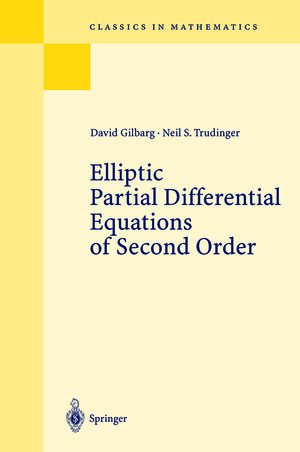
“This book is a bibliographical monument to the theory of both theoretical and applied PDEs that has not acquired any flaws due to its age. On the contrary, it remains a crucial and essential tool for the active research in the field.” (Francesco Petitta, SIAM Review, Vol. 61 (4), December, 2019)
From the reviews:
„The aim of the book is to present “the systematic development of the general theory of second order quasilinear elliptic equations and of the linear theory required in the process„. The book is divided into two parts. The first (Chapters 2-8) is devoted to the linear theory, the second (Chapters 9-15) to the theory of quasilinear partial differential equations. These 14 chapters are preceded by an Introduction (Chapter 1) which expounds the main ideas and can serve as a guide to the book. ... The authors have succeeded admirably in their aims; the book is a real pleasure to read“.
Mathematical Reviews,1986
„Advanced students and professionals are snapping up this paperback text on linear and quasilinear partial differential equations. Whether you use their book as textbook or reference, the authors give you plenty to think about and work on, including an epilogue summarizing the latest research.“
Amazon. com delivers Mathematics and Statistics e-bulletin, July 2001
From the reviews:
"This is a book of interest to any having to work with differential equations, either as a reference or as a book to learn from. The authors have taken trouble to make the treatment self-contained. It (is) suitable required reading for a PhD student. Although the material has been developed from lectures at Stanford, it has developed into an almost systematic coverage that is much longer than could be covered in a year's lectures„. Newsletter, New Zealand Mathematical Society, 1985
“ ... as should be clear from the previous discussion, this book is a bibliographical monument to the theory of both theoretical and applied PDEs that has not acquired any flaws due to its age. On the contrary, it remains a crucial and essential tool for the active research in the field. In a few words, in my modest opinion, “. . . this book contains the essential background that a researcher in elliptic PDEs should possess the day s/he gets a permanent academic position. . . .” SIAM Newsletter



